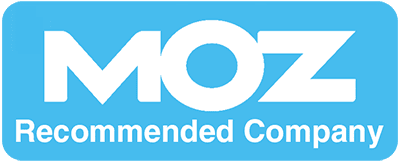Search isn’t just changing—it’s being rewritten. In just 18 months, AI went from novelty to default, and marketers are scrambling to redefine visibility.
Generative AI is now baked into search, from Google’s AI Overviews to ChatGPT and Perplexity. Traditional SEO playbooks? Flipped. And the pressure’s on—66% of consumers expect AI to replace search entirely within five years.
To dig into the shift, Fractl and Search Engine Land surveyed over 800 marketers and 2,000 consumers. The goal: understand how AI is reshaping traffic, trust, and content strategies.
These 10 takeaways show how brands are adapting to AI-first search—and what it means for visibility, workflow, and ROI.
1. AI use is now default – but most marketers are only scratching the surface.
AI isn’t optional in content marketing anymore—it’s standard. According to our study, 83% of marketers say their teams already use AI tools. Agencies lead the way with 90% adoption, compared to 81% for in-house teams. But beneath that headline stat, most aren’t scratching beyond the surface.
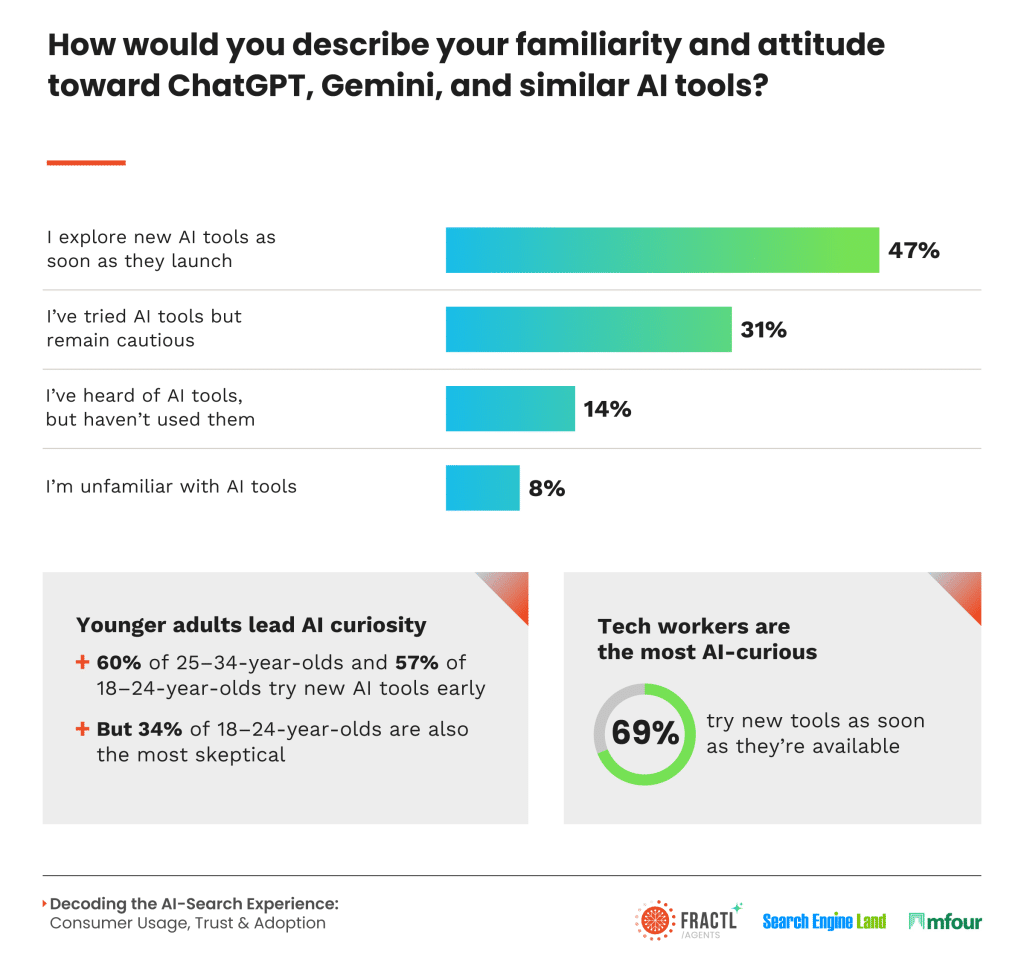
The edge is shrinking. While 83% have adopted AI, just 4% use it strategically. That gap is still an opportunity—but not for long.
Only 4% of marketers say AI powers most or all of their content work (76–100%). Most teams stick to short, simple tasks: writing social captions, drafting emails, optimizing title tags and meta descriptions.
Right now, teams see AI as a helper—not a driver. The numbers back that up: 35% say they’re underusing AI, and 47% still struggle to fully integrate it into their workflows. Confidence is high (83%), but most are still stuck at the surface.
As generative tools get smarter, the gap between what’s possible and what’s happening keeps widening. To close it, marketers need to stop using AI just to save time—and start using it to rethink how content gets planned, created, and delivered.
2. AI Overviews are stealing attention—and traffic.
Since Google launched AI Overviews in May 2024, marketers have been raising red flags: organic traffic is dropping—even when rankings stay strong.
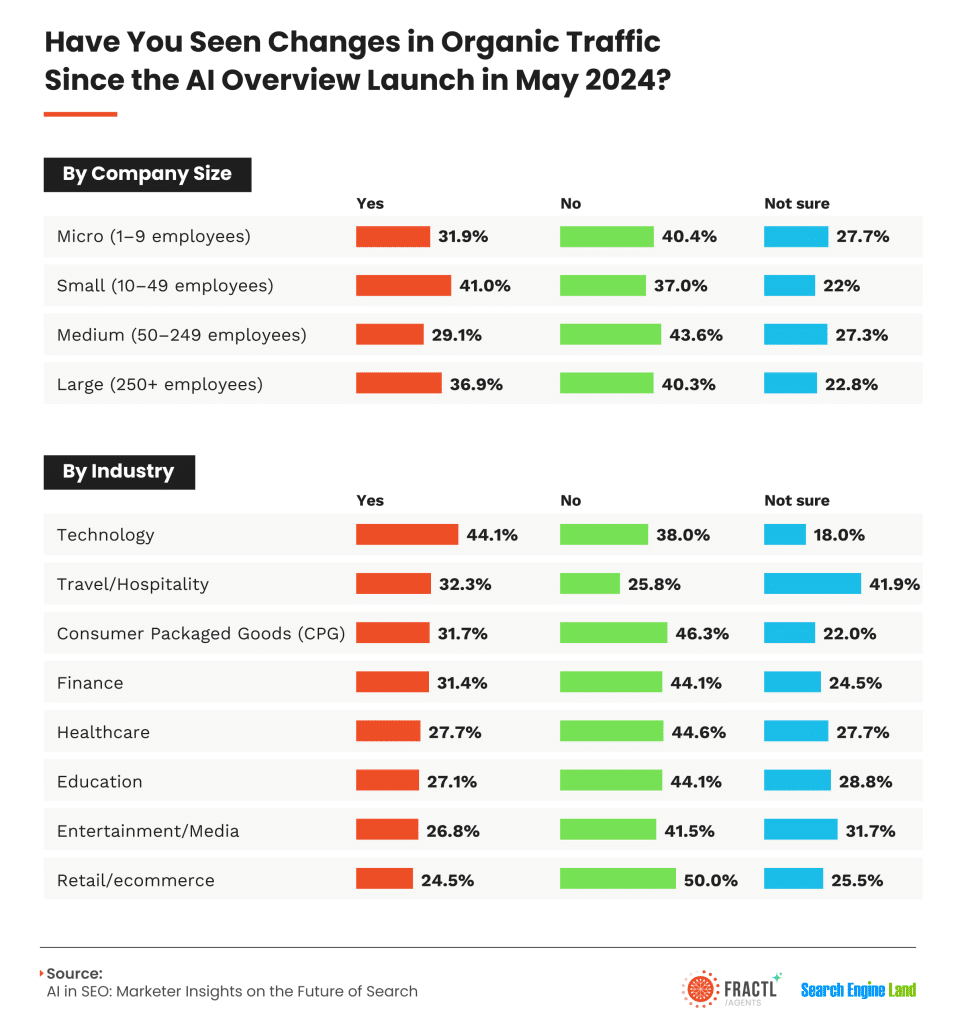
The numbers say it all. Nearly 4 in 10 marketers (39%) report traffic losses since the rollout. Some industries feel it more than others: 44% of tech brands, 43% of travel and hospitality, and 35% of retail and e-commerce teams saw declines.
This isn’t a glitch—it’s a change in how people search. Users get answers straight from AI summaries, skipping the usual list of blue links. And when the AI box sits at the top, even top-ranking content can go unseen.
For SEO teams, it’s a wake-up call. Ranking #1 isn’t enough anymore. Now, success depends on being featured or cited inside Google’s AI layer. Visibility means more than links—it means inclusion.
But this shift isn’t just about algorithms. It’s about a generational change in how people find information.
3. Gen Z isn’t using Google like you think.
While marketers chase SERP real estate, Gen Z is finding brands elsewhere. For them, search isn’t a list of links—it’s chatbots, short videos, and social scrolls.
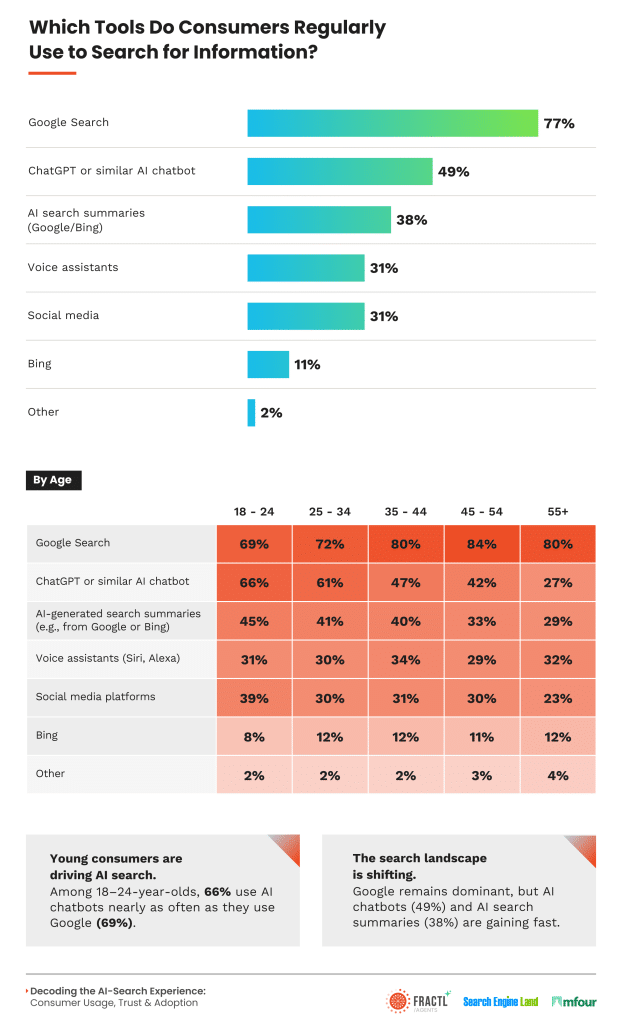
So where are they actually searching? Among 18–24-year-olds, 66% use ChatGPT to find information—almost as many as the 69% who use Google. That number drops sharply in older age groups. Meanwhile, 39% say TikTok and Instagram are their go-to search engines for answers, recs, and how-tos.
This isn’t just a generational quirk—it’s a new definition of search. Older users might see ChatGPT as a tool. Gen Z sees it as default. They move fluidly between prompts and posts, AI and creators, chat and scroll.
This shift has major implications for content strategy. To reach Gen Z, brands need to show up in conversations, feeds, and communities—not just search results. Skip social search and AI discovery, and you’re invisible to a rising generation.
4. In Google, the click is no longer guaranteed.
Even for users still on Google, behavior has shifted. AI Overviews now top many search results, delivering full, conversational summaries that often answer the question outright.
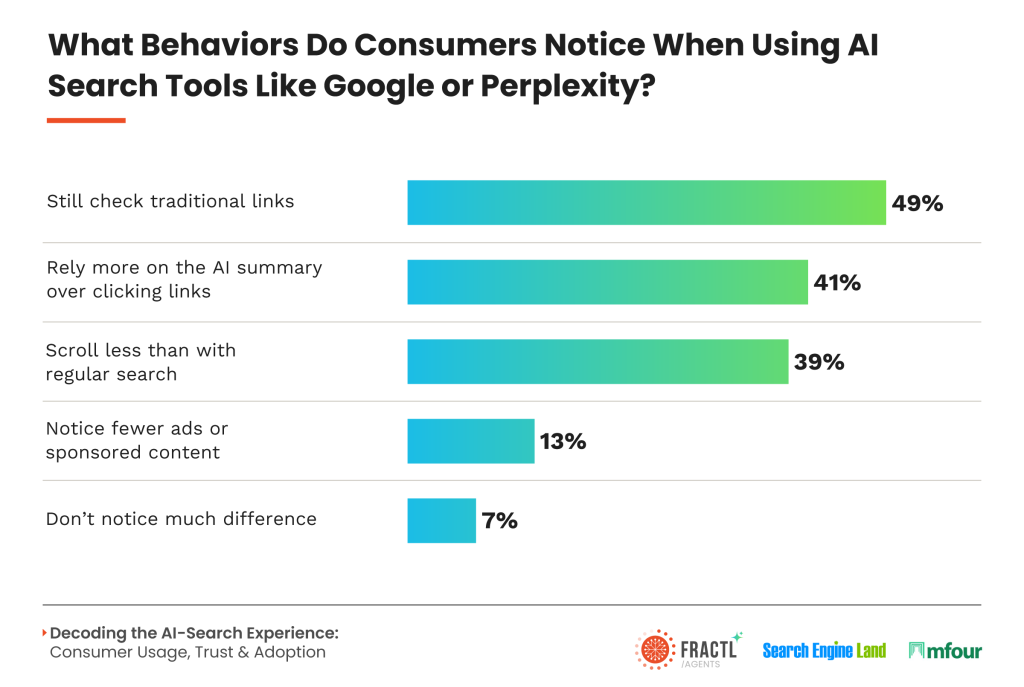
That’s changing how people search. Among AI-powered tool users, 41% rely more on summaries than links. Another 13% skip search entirely, turning to tools like ChatGPT or Perplexity.
This isn’t a blip—it’s the new normal. Two-thirds of consumers (66%) expect AI to replace traditional search within five years. Only 11% disagree. The change is here, and it’s permanent.
The pageview funnel is breaking. People aren’t scrolling—they’re scanning and stopping.
SEO isn’t dead. But “visibility” needs a new definition. If your content isn’t built for AI systems, it won’t show up above the fold. Ranking #1 won’t matter if the AI summary gets all the attention.
5. Most marketers aren’t optimizing for AI visibility – yet.
AI is reshaping how users find information—but most marketing teams are still optimizing for a world that no longer exists.
So why aren’t more teams adapting? Simple: they’re still playing by old rules. Few brands invest in structured data, FAQ schema, or formats built for AI responses. Most marketers admit their SEO strategy hasn’t changed much since Google started rolling out AI Overviews.
This isn’t just a tech gap—it’s a mindset gap. Traditional SEO chased page rank. AI visibility demands clear, structured, retrievable content. But most teams still focus on links, not language models.
Some are pulling ahead. These teams track brand mentions in SGE and ChatGPT, test semantically rich copy, and use prompt-based workflows. For them, AI visibility isn’t a bonus—it’s a KPI.
The window’s closing. Soon, AI-ready content won’t give you an edge—it’ll just be the baseline.
6. AI fatigue is setting in.
AI hype is real—but so is the pressure. The numbers say it all: 52% of marketers feel heavy pressure to adopt AI just to stay competitive. Another 32% feel moderate pressure. That’s nearly 85% feeling the heat.
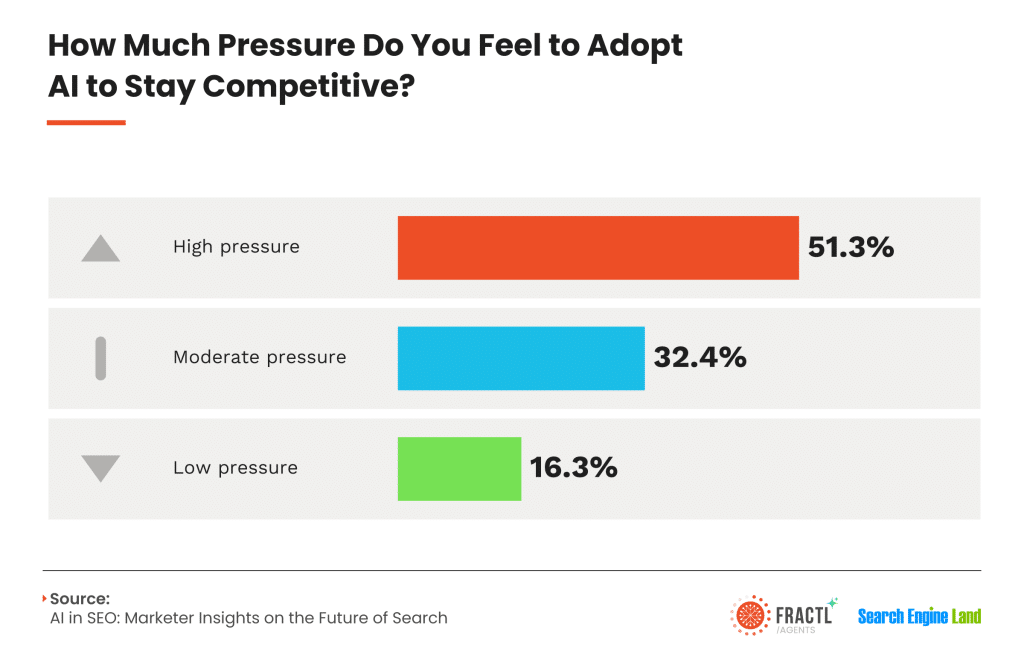
And it’s not just logistical—it’s emotional. As AI tools evolve fast, many marketers feel caught between long-term goals and day-to-day demands. The strain is worse in bigger companies. Teams at orgs with 250+ employees are 18% more likely to lack leadership buy-in than micro-businesses (8%).
The gap between strategy and execution is widening. Without clear support or upskilling paths, teams risk falling behind—or burning out trying to keep up.
Bottom line: AI isn’t just changing how teams work—it’s speeding everything up. And for many, the learning curve feels like a cliff.
That pressure gets worse when trust breaks down. Marketers aren’t just struggling to adopt AI—they’re starting to doubt its accuracy.
7. Trust in AI summaries is low—and dropping.
Marketers aren’t sold on AI’s ability to deliver search results that are accurate and trustworthy—and skepticism is growing.
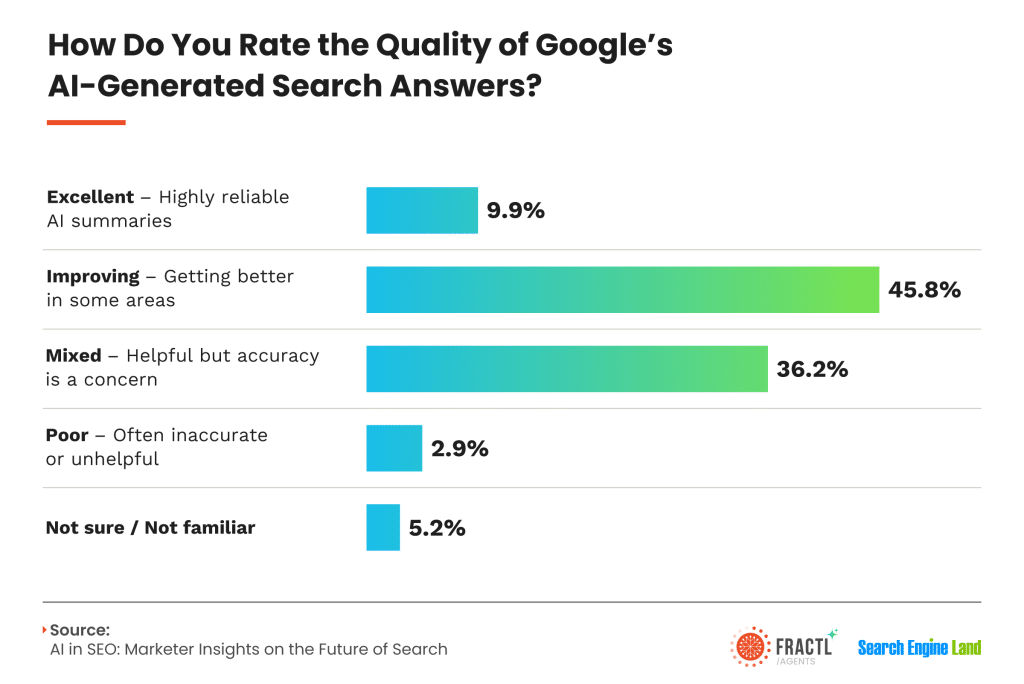
Only 10% rate Google’s AI Overviews as excellent. More than half (53%) say they’re average or worse. But it’s not just about quality—it’s about trust. A full 78% worry about misinformation in AI summaries, and 23% say search engines fail to disclose how AI shapes rankings or content surfacing. Only 11% think search engines are doing a good job being transparent about AI’s role.
That lack of clarity isn’t just frustrating—it’s risky. If AI misrepresents your content or links your brand to bad info, you’re looking at lost trust, reputational damage, and diluted authority.
As AI becomes more central to content discovery, the cost of being misquoted—or left out—keeps climbing.
8. Accuracy is top of mind—but quality control is lagging behind.
AI tools keep scaling across marketing teams—but the systems to verify their output haven’t kept pace. In our study, 56% of marketers named content accuracy as their top concern when using AI.
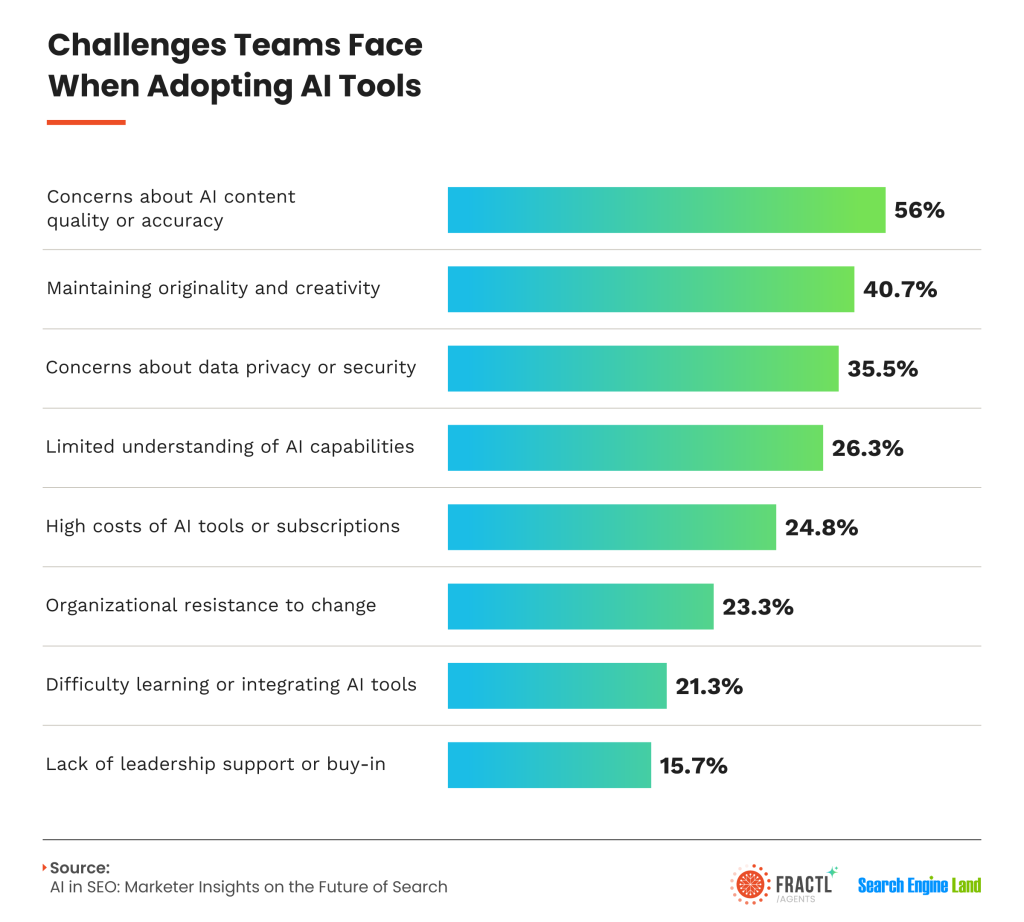
Still, most teams lack formal review processes or editorial checks built for AI-generated content. That gap—between concern and control—is a growing risk, not just for misinformation, but for brand trust.
In a world where one hallucinated fact can spread fast, quality assurance isn’t optional. It’s the next stage of content governance. Teams that treat AI QA like core editorial work—not an afterthought—will scale faster without sacrificing accuracy.
But here’s the question: is all this efficiency actually helping?
9. AI isn’t replacing marketers—it’s just giving them more to do.
One of the biggest myths about AI at work is that it’s replacing people. The reality? Not yet. AI isn’t cutting jobs—it’s amplifying productivity. And marketers are feeling it.
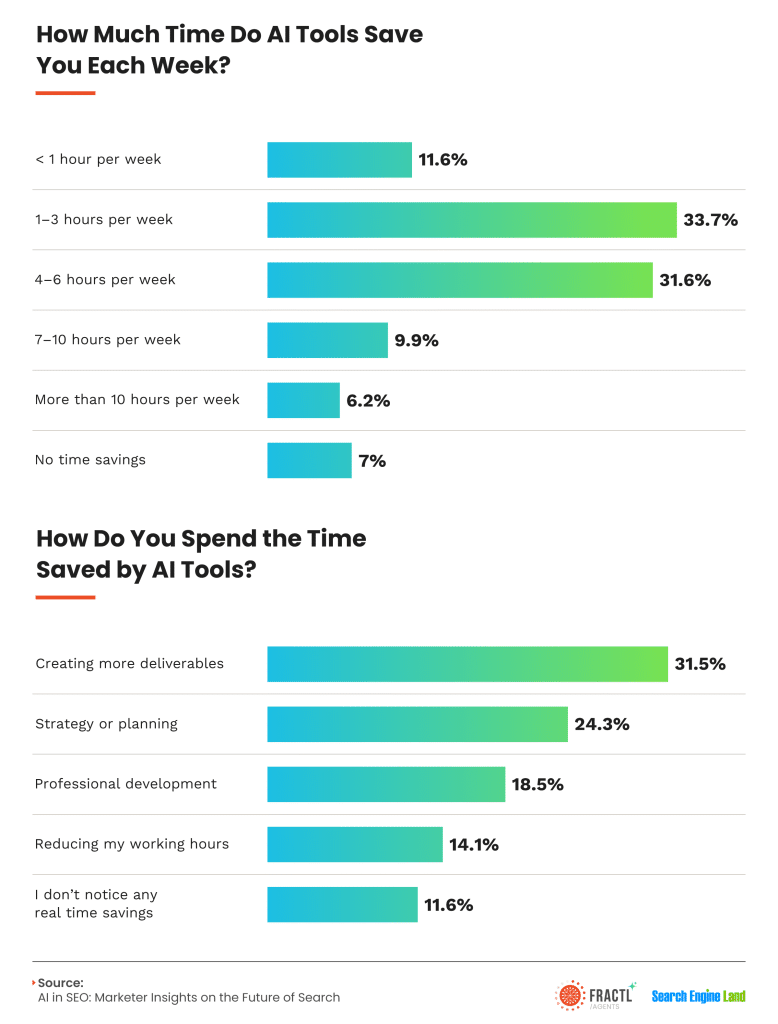
In our study, 66% say AI saves them 1 to 6 hours a week—almost a full workday each month. But that time isn’t going to rest. It’s getting reinvested into more deliverables, new formats, and long-delayed strategy work.
On paper, it’s a win. In practice, it’s risky. AI boosts output—but also raises expectations. Teams are producing more than ever and edging closer to burnout.
Efficiency without limits becomes a treadmill. Without clear boundaries and rebalanced goals, AI’s time savings could end up speeding teams into exhaustion.
10. The SEO playbook isn’t dead—it’s being rewritten.
Rumors of SEO’s death are overblown. Yes, the SERP is shifting. Yes, AI is changing how people find and engage with content. But generative search isn’t killing SEO—it’s rewriting the playbook.
Top brands aren’t ditching the basics. They’re upgrading them. Rankings, backlinks, domain authority—they still matter. But now, they’re pairing those tactics with AI-ready strategies built for today’s search:
• Schema markup to signal structure and meaning
• Conversational copy that matches how people ask questions
• Summarization-first writing built to be scraped, quoted, and cited by AI tools
These aren’t just tweaks—they reflect a shift in mindset. In AI-driven search, visibility means being relevant and retrievable.
And the leaders aren’t waiting. They’re already testing how content appears in SGE, ChatGPT, and Perplexity, tracking snippet placement alongside SERP rank. They’re building hybrid strategies that mix classic SEO with AI-first thinking.
SEO isn’t dead—it’s evolving. And the brands evolving with it? They’re not just ranking. They’re being found, cited, and trusted in an AI-shaped future.
The Path Forward
To stay ahead, marketing teams need to juggle three things: stick to SEO fundamentals, build AI-friendly content, and scale quality control for automated workflows. Teams that nail this hybrid model won’t just keep up—they’ll lead.
The shift isn’t coming. It’s here. AI has already reshaped how people discover content. The only question now is whether your brand can adapt fast enough to stay visible in a world where algorithms decide who gets seen—and who disappears.




